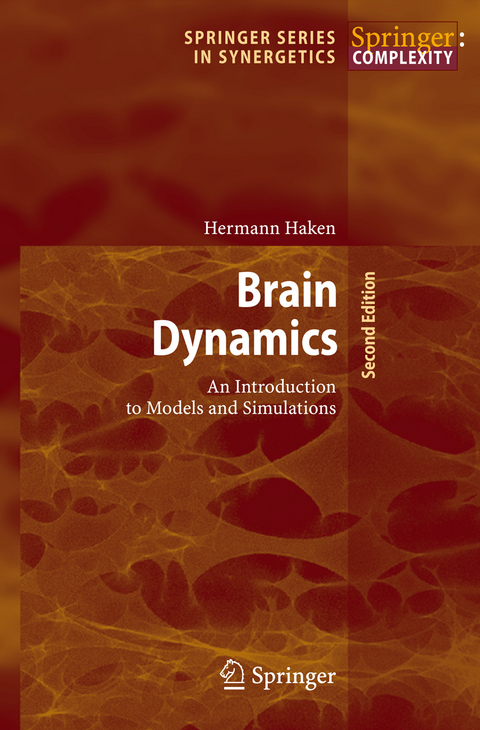
Brain Dynamics
Springer Berlin (Verlag)
978-3-642-09450-7 (ISBN)
Brain Dynamics serves to introduce graduate students and nonspecialists from various backgrounds to the field of mathematical and computational neurosciences. Some of the advanced chapters will also be of interest to the specialists. The book approaches the subject through pulse-coupled neural networks, with at their core the lighthouse and integrate-and-fire models, which allow for the highly flexible modelling of realistic synaptic activity, synchronization and spatio-temporal pattern formation. Topics also include pulse-averaged equations and their application to movement coordination. The book closes with a short analysis of models versus the real neurophysiological system.
The second edition has been thoroughly updated and augmented by two extensive chapters that discuss the interplay between pattern recognition and synchronization. Further, to enhance the usefulness as textbook and for self-study, the detailed solutions for all 34 exercises throughout the text have been added.
Hermann Haken is Professor of the Institute for Theoretical Physics at the University of Stuttgart. He is known as the founder of synergetics. His research has been in nonlinear optics (in particular laser physics), solid state physics, statistical physics, and group theory. After the implementation of the first laser in 1960, Professor Haken developed his institute to an international center for laser theory. The interpretation of the laser principles as self organization of non equilibrium systems paved the way to the development of synergetics, of which Haken is recognized as the founder. Hermann Haken has been visiting professor or guest scientist in England, France, Japan, USA, Russia, and China. He is the author of some 23 textbooks and monographs that cover an impressive number of topics from laser physics to synergetics, and editor of a book series in synergetics. For his pathbreaking work and his influence on academic research, he has been awarded many-times. Among others, he is member of the Order "Pour le merite" and received the Max Planck Medal in 1990.
Basic Experimental Facts and Theoretical Tools.- The Neuron - Building Block of the Brain.- Neuronal Cooperativity.- Spikes, Phases, Noise: How to Describe Them Mathematically? We Learn a Few Tricks and Some Important Concepts.- Spiking in Neural Nets.- The Lighthouse Model. Two Coupled Neurons.- The Lighthouse Model. Many Coupled Neurons.- Integrate and Fire Models (IFM).- Many Neurons, General Case, Connection with Integrate and Fire Model.- Pattern Recognition Versus Synchronization: Pattern Recognition.- Pattern Recognition Versus Synchronization: Synchronization and Phase Locking.- Phase Locking, Coordination and Spatio-Temporal Patterns.- Phase Locking via Sinusoidal Couplings.- Pulse-Averaged Equations.- Conclusion.- The Single Neuron.- Conclusion and Outlook.- Solutions to Exercises.
| Erscheint lt. Verlag | 23.11.2010 |
|---|---|
| Reihe/Serie | Springer Series in Synergetics |
| Zusatzinfo | XIV, 333 p. 85 illus. |
| Verlagsort | Berlin |
| Sprache | englisch |
| Maße | 155 x 235 mm |
| Gewicht | 526 g |
| Themenwelt | Naturwissenschaften ► Physik / Astronomie ► Angewandte Physik |
| Schlagworte | Computational Neuroscience • Dynamical Systems • Movement control • Neural Nets • Neural networks • Neuronal Systems • neurons • Synaptic Models |
| ISBN-10 | 3-642-09450-3 / 3642094503 |
| ISBN-13 | 978-3-642-09450-7 / 9783642094507 |
| Zustand | Neuware |
| Haben Sie eine Frage zum Produkt? |
aus dem Bereich


